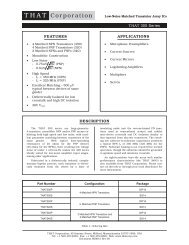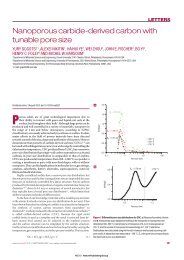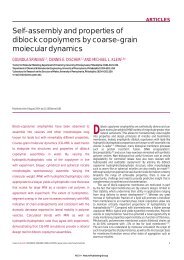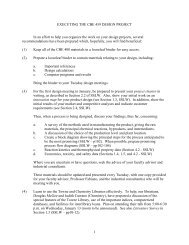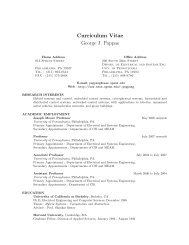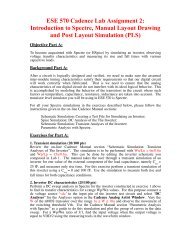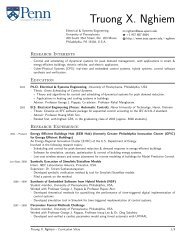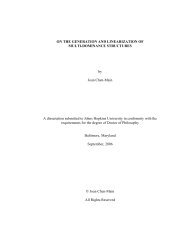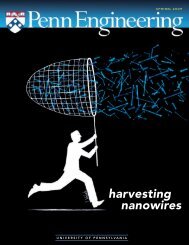Download PDF (9.49MB) - the School of Engineering and Applied ...
Download PDF (9.49MB) - the School of Engineering and Applied ...
Download PDF (9.49MB) - the School of Engineering and Applied ...
Create successful ePaper yourself
Turn your PDF publications into a flip-book with our unique Google optimized e-Paper software.
A Biological Universe<br />
in a Drop <strong>of</strong> Blood<br />
By Elisa Ludwig<br />
It is no surprise that a chemical engineer would study<br />
liquid flowing down a pipe. What may be unexpected<br />
is that Scott Diamond, <strong>the</strong> recently named Chair <strong>of</strong><br />
Penn <strong>Engineering</strong>’s Department <strong>of</strong> Chemical <strong>and</strong><br />
Biomolecular <strong>Engineering</strong>, studies human blood, one<br />
<strong>of</strong> <strong>the</strong> most complicated fluids on <strong>the</strong> planet, as it<br />
flows through an essential pipe, <strong>the</strong> coronary artery.<br />
When things go well, blood flows smoothly. But<br />
dangerous clotting events can cause heart attacks<br />
<strong>and</strong> strokes, still <strong>the</strong> nation’s deadliest killers.<br />
Diamond uses liquid-h<strong>and</strong>ling robots, originally<br />
developed for <strong>the</strong> pharmaceutical industry, to run<br />
thous<strong>and</strong>s <strong>of</strong> measurements on a small volume <strong>of</strong> an<br />
individual’s blood. “Each person’s blood has a unique<br />
personality, a phenotype, in <strong>the</strong> way it responds to all<br />
<strong>the</strong> many different stimuli present during a clotting<br />
event,” Diamond says. His team uses <strong>the</strong>se data sets<br />
to train computer models to predict <strong>the</strong> severity <strong>of</strong> a<br />
heart attack given one’s blood pr<strong>of</strong>ile. These computer<br />
simulations help identify <strong>the</strong> patient-specific benefits<br />
or risks <strong>of</strong> a particular drug <strong>the</strong>rapy.<br />
His fascination with human biology began during<br />
his undergraduate years at Cornell University in<br />
<strong>the</strong> mid-80s, just as <strong>the</strong> first recombinant protein, a<br />
blood clot dissolving enzyme called tPA, was being<br />
developed by Genentech. Intrigued by <strong>the</strong> body’s own<br />
production <strong>of</strong> tPA, Diamond discovered during his<br />
Ph.D. work at Rice University that fluid mechanical<br />
forces could actually activate <strong>the</strong> tPA gene inside<br />
endo<strong>the</strong>lial cells lining blood vessels.<br />
Training for Diverse Careers<br />
As faculty member <strong>and</strong> Chair, Diamond continues to<br />
approach chemical <strong>and</strong> biomolecular engineering as a<br />
discipline that syn<strong>the</strong>sizes knowledge <strong>and</strong> dem<strong>and</strong>s<br />
collaboration. “The compelling aspect about chemical<br />
engineering is that our graduates can go on to work<br />
in energy, biotechnology, pharmaceuticals, electronic<br />
materials, or any number <strong>of</strong> wide-ranging areas,” says<br />
Diamond. “Our goal at Penn is to provide specialized<br />
curricula <strong>and</strong> concentrations so that by <strong>the</strong> time<br />
students graduate, <strong>the</strong>y develop pr<strong>of</strong>ound knowledge<br />
in <strong>the</strong>ir interest areas.”<br />
PENN ENGINEERING n 3



